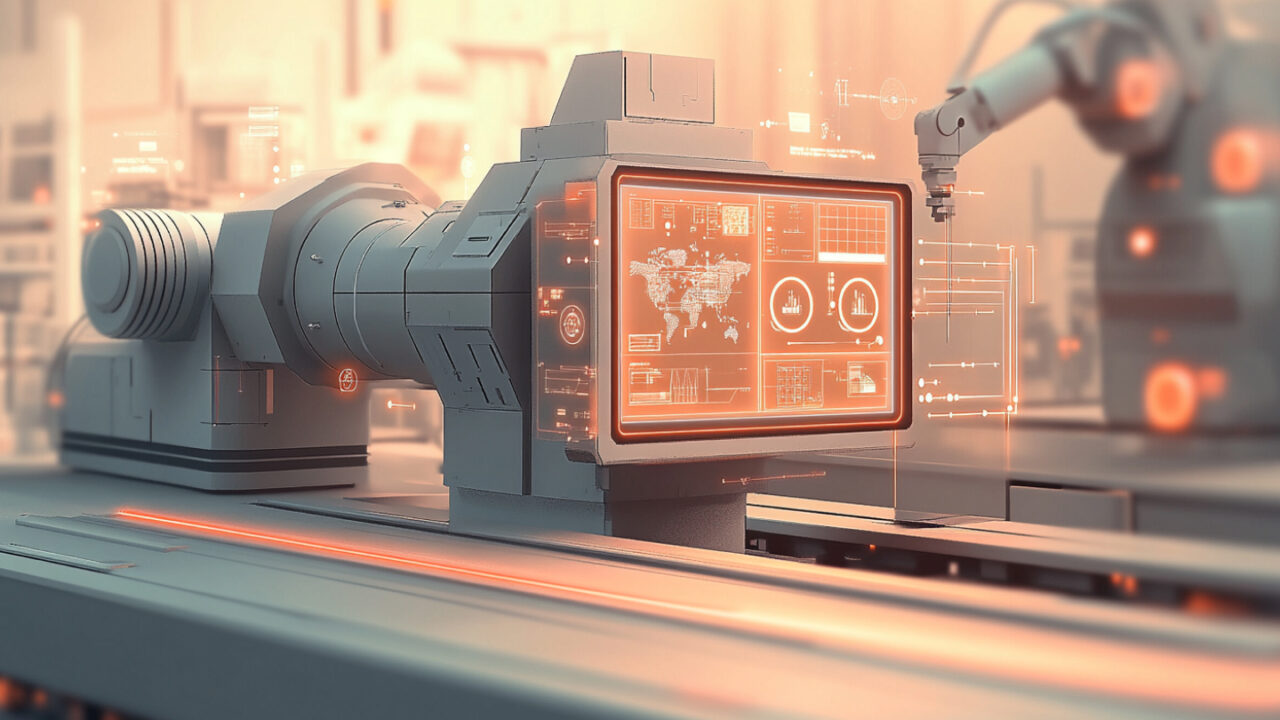AI-Enabled Predictive Maintenance in Manufacturing: Reducing Downtime with Data-Driven Insights
Why Maintenance Still Matters
In the modern manufacturing landscape, prioritizing maintenance isn’t merely an option; it’s the very foundation of operational stability. A sudden equipment breakdown is a crisis that ripples through the entire business, creating far more damage than just a pause in production. The economic fallout is immense, including the costs of emergency fixes, scrapped inventory, and significant revenue loss.
For years, industries have relied on traditional methods, such as preventive and scheduled maintenance. While a step in the right direction, these approaches were fundamentally reactive or based on assumptions. They often led to unnecessary downtime by performing work on perfectly functional equipment, or, worse, failed to catch an impending issue, allowing a catastrophic breakdown to occur.
This is where AI-Enabled Predictive Maintenance (PdM) comes in, the cornerstone of modern manufacturing. It is a smarter and more efficient way to monitor machine health and anticipate failures before they occur. It offers real-time, data-driven insights that help reduce downtime and improve productivity.
What is AI-Enabled Predictive Maintenance (PdM)?
AI-enabled or data-driven Predictive Maintenance goes far beyond traditional methods by leveraging intelligent data analysis and advanced sensor technologies to monitor machines in real-time across diverse industrial setups.
Unlike conventional AI-Enabled Predictive Maintenance, this modern approach collects critical data in various forms, from vibration, temperature, acoustic signals, to energy consumption, coming from different components and machinery types across manufacturing sectors. The system then applies AI and machine learning algorithms to analyze this rich dataset and accurately predict potential failures or unscheduled maintenance needs before they disrupt operations.
This is made possible through the integration of advanced industrial IoT sensors and smart monitoring systems that track subtle behavioral changes in equipment on production lines. The result? Maintenance is performed exactly when needed, no earlier, no later, minimizing downtime, optimizing asset life, and reducing unnecessary service costs. From automotive plants to precision electronics manufacturing, forward-thinking industries are embracing this shift to maximize operational efficiency and stay globally competitive.
Key Benefits of AI-Enabled Predictive Maintenance
1. Reduced Unplanned Downtime
AI models detect early signs of failure, enabling timely interventions before a breakdown occurs.
2. Cost Savings on Repairs & Labor
By preventing major breakdowns, companies save on emergency repair costs and reduce overtime labor expenses.
3. Extended Equipment Lifespan
Continuous monitoring and timely fixes help reduce wear and tear, enhancing asset longevity.
4. Remote Monitoring Capabilities
IoT-enabled sensors allow centralized oversight of machinery across locations, reducing manual checks.
5. Optimized Maintenance Scheduling
Maintenance is performed only when needed, avoiding both premature servicing and unexpected breakdowns.
6. Improved Safety & Compliance
Real-time fault detection minimizes safety hazards and ensures compliance with industry regulations.
7. Higher Production Efficiency
Minimizing machine downtime leads to smoother operations and increased output quality and quantity.
8. Data-Driven Decision Making
Historical and real-time data insights support informed strategic planning and resource allocation.
9. Scalability Across Equipment Types
It can be applied to various machines, motors, pumps, and conveyors across different industries and scales.
10. Integration with Industry 4.0/5.0 Ecosystems
Seamlessly fits into smart factory environments, contributing to automation and intelligent manufacturing.
According to Deloitte and McKinsey, adopting data-driven AI-enabled Predictive Maintenance can lower maintenance costs by up to 25%, cut unplanned downtime by up to 70%, increase equipment lifespan by 20–40%, and increase productivity by 25%.
Core Technologies Behind AI-Enabled Predictive Maintenance
AI-Enabled Predictive Maintenance depends on a powerful combination of technologies that make data-driven insights possible:
- IoT Sensors: Devices that capture real-time machine performance data such as heat, vibration, or humidity.
- Edge Computing: Enables fast data processing at the source, reducing latency and allowing instant decision-making.
- AI and Machine Learning Models: Analyze historical and live data to predict failures and optimize maintenance schedules.
- Cloud Platforms: Centralize data storage, analysis, and visualization for better scalability and access.
- Digital Twins: Create virtual models of physical assets to simulate performance and detect issues before they happen.
- System Integrations: Seamless connection with ERP, SCADA, or MES systems ensures workflow continuity and automation
- Big Data Analytics: Techniques to manage and analyze vast, complex machine data sets to uncover patterns that traditional tools can’t detect.
- Computer Vision: Cameras and AI-powered image analysis systems are used to detect surface defects, component misalignments, and wear in real time.
- Vibration Analysis Technology: A key part of rotating machinery monitoring—AI models can detect subtle changes in vibration patterns linked to faults.
- Natural Language Processing (NLP): Helps in analyzing maintenance logs, technician notes, and unstructured data to support failure pattern recognition.
- Cyber-Physical Systems (CPS): Integration of computation, networking, and physical processes to automate decision-making in smart maintenance systems.
Together, these tools enable predictive systems that are not just reactive but proactive, helping organizations stay ahead of operational disruptions.
Real-World Use Cases in Manufacturing
Automotive Manufacturing – Predicting Robot Arm Failures
Companies like BMW and Toyota use AI to monitor robotic arms for abnormal torque, vibration, or motor current—reducing production halts and unplanned repairs.
Steel Industry – Monitoring Rolling Mill Bearings
Steel plants deploy vibration sensors and AI models to predict bearing failures in rolling mills, preventing massive downtime during heavy production cycles.
Electronics Manufacturing – PCB Assembly Line Monitoring
AI-driven image processing and sensor analytics are used to detect component misalignment and soldering defects in real-time on PCB assembly lines.
Textile Industry – Loom and Spindle Monitoring
Textile manufacturers use sensor data to monitor spindle vibrations and temperature to predict mechanical wear, improving machine uptime and fabric quality.
Cement Industry – Kiln & Motor Health Analysis
Companies deploy edge-AI sensors on rotary kilns and heavy-duty motors to monitor heat, load, and pressure, triggering timely maintenance actions.
Food & Beverage – Packaging Line Monitoring
AI systems predict failures in conveyors, compressors, and labelers by analyzing operational speed, acoustic signals, and power consumption.
Pharmaceuticals – HVAC and Cleanroom Equipment Health
Predictive analytics are used to monitor cleanroom HVAC systems and critical filtration units to avoid contamination and regulatory non-compliance.
Consumer Goods – Injection Molding Machine Monitoring
AI tracks injection speed, temperature, and pressure patterns to predict component fatigue in molds, helping avoid defects in plastic products.
Energy Sector – Generator & Turbine Fault Detection
Manufacturing units with captive power plants use AI to predict turbine and generator issues from thermal, acoustic, and pressure data.
Aerospace Component Manufacturing – CNC Machine Health
CNC machines used for high-precision aerospace parts are equipped with data-driven monitoring systems to forecast tool wear and
Implementation Best Practices
Begin with a Focused Pilot
Start small with a critical machine or line. This helps validate the approach in real factory conditions and supports phased adoption across larger operations.
Assess Data Readiness Early
Use this stage to evaluate whether sensor data is consistent, sufficient, and well-structured. Ensuring data quality at the start can significantly improve model outcomes later.
Utilize Historical Maintenance Records
Implement AI models using past service logs and equipment failure data. These records provide valuable learning patterns and help reduce false alerts.
Select Algorithms Based on Context
Apply AI/ML models that fit the nature of your equipment. Not every machine or failure mode responds the same—model selection should reflect operational reality.
Consider Edge + Cloud Balance
Use edge computing for immediate alerts and cloud platforms for deeper analysis and historical trend mapping. A hybrid architecture often works best.
Ensure Integration with Existing Maintenance Systems
Implement connectivity with CMMS or ERP systems to bring predictive insights directly into your existing workflows and avoid isolated data silos.
Invest in Team Familiarity
Equip your maintenance and operations teams with the know-how to interpret dashboards, thresholds, and alerts. Adoption improves when users are confident.
Build with Security in Mind
Concentrate on protecting connected assets and data pipelines. As systems become more interconnected, cybersecurity becomes central to system reliability.
Review and Adapt Continuously
Use regular reviews to validate model accuracy and adjust thresholds or logic as machinery usage evolves. Continuous improvement keeps predictions relevant.
Think Long-Term, Scale Strategically
After proving success on one or two lines, consider expanding step-by-step to other machinery or locations in alignment with operational priorities.
Conclusion: Preparing for a Predictive Future
AI-Enabled Predictive Maintenance is no longer a futuristic concept—it’s a practical, proven strategy that helps manufacturers reduce downtime, lower costs, and enhance operational resilience. As the industry continues to embrace AI and smart technologies, PdM will play a central role in enabling agile, efficient production environments. Manufacturers that start today will be better prepared to compete tomorrow—with data as their most valuable maintenance tool.
Ready to transform your maintenance strategy with AI? InfoBeans can help you get there—faster. Contact us to learn more.
FAQs:
1. What is AI-Enabled Predictive Maintenance in manufacturing?
Ans. AI-Enabled Predictive Maintenance uses real-time data and AI to predict when equipment will need servicing, helping prevent unexpected failures.
2. How does AI-Enabled Predictive Maintenance reduce downtime?
Ans. It detects early signs of equipment issues and alerts teams before breakdowns happen, allowing timely intervention.
3. What technologies are used in AI-Enabled Predictive Maintenance?
Ans. AI-Enabled Predictive Maintenance relies on IoT sensors, machine learning, edge computing, and cloud-based analytics platforms.
4. Can AI-Enabled Predictive Maintenance be integrated with existing systems?
Ans. Yes, it can be integrated with ERP, SCADA, or MES systems for seamless monitoring and automation.
5. What’s the ROI of using AI-Enabled Predictive Maintenance in manufacturing?
Ans. Companies see 30–50% lower maintenance costs and up to 70% fewer breakdowns, leading to higher efficiency and output.










